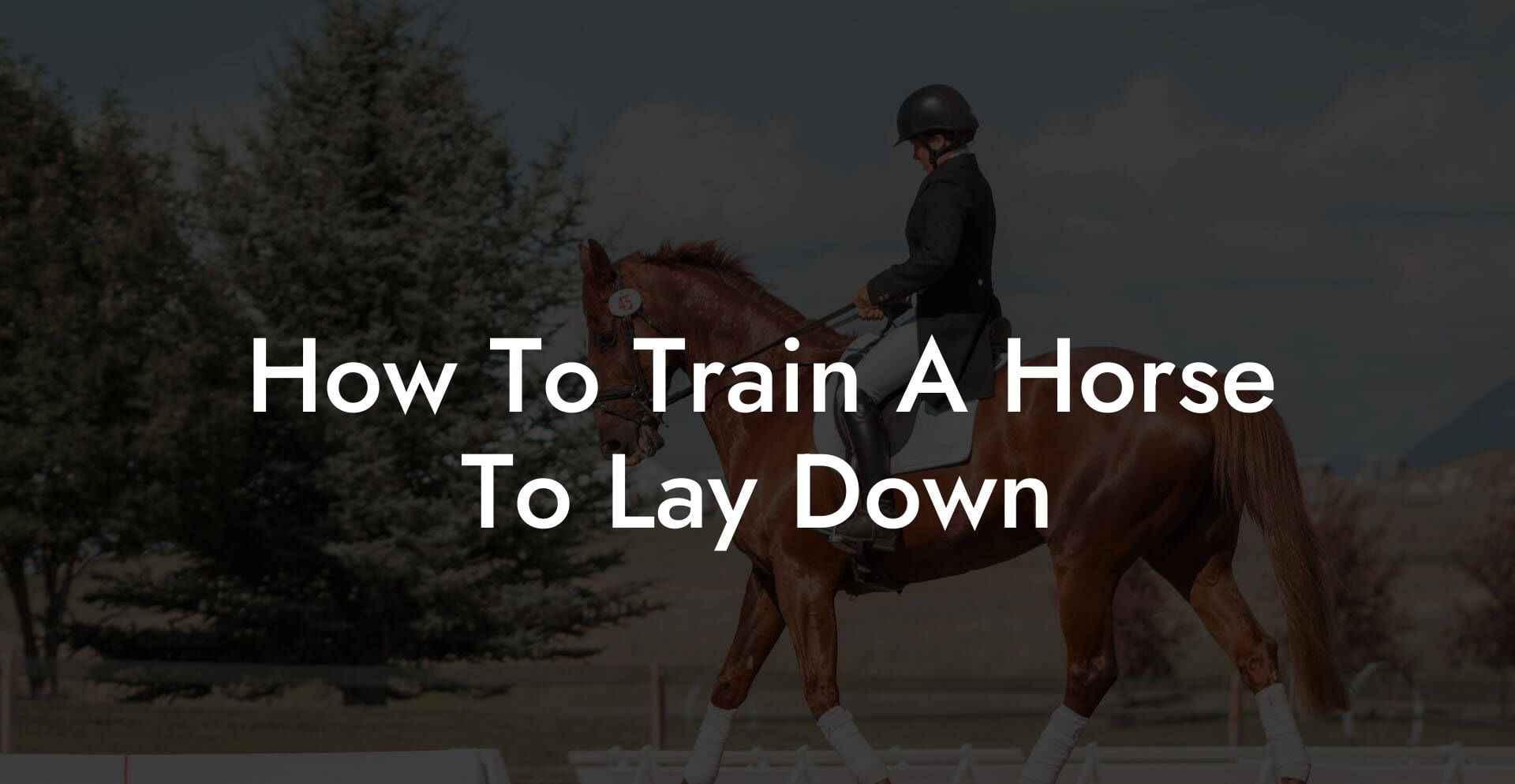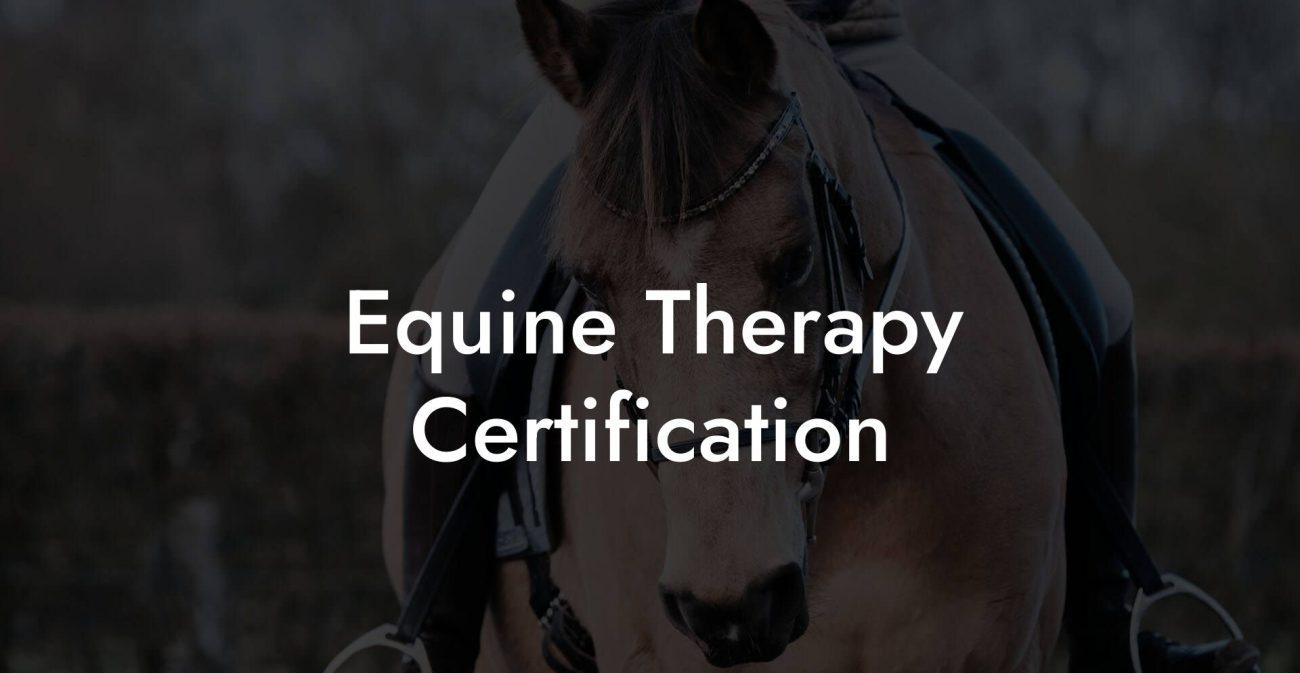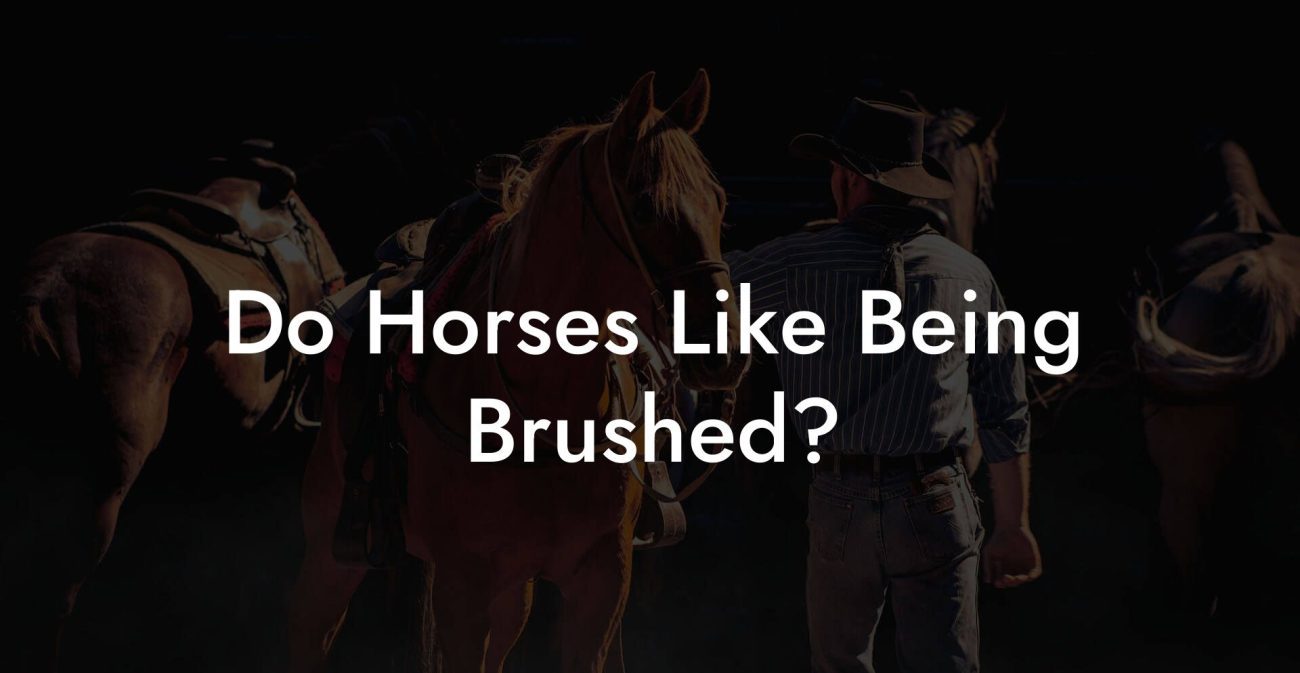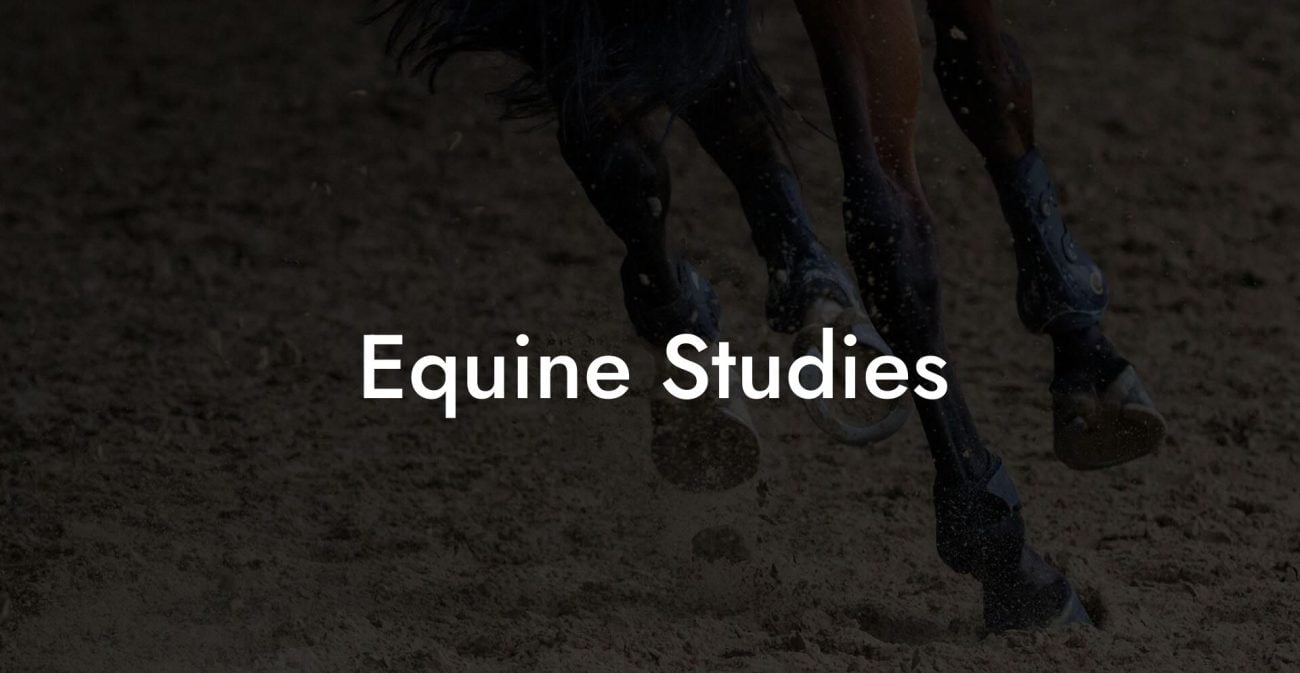There’s something undeniably captivating about a horse that not only obeys your every command but can also lay down on cue, transforming from a high-spirited creature into a chilled, horizontal zen master in mere moments. This isn’t just another party trick; it’s a skill that deepens your connection with your equine buddy, elevates trust, and adds an extra spark to your riding adventures. If you’re ready to explore unconventional training methods that mix humor, patience, and a dash of millennial flair, you’re in the right place. Let's dive into the wild and rewarding world of teaching your horse to lay down.
Quick Links to Useful Sections
- The Allure and Benefits of a Laid-Back Horse
- Understanding Equine Behavior: The Key to a Smooth Training Journey
- Pre-Training Essentials: Crafting a Safe and Inviting Environment
- Harnessing the Right Gear: Tools and Treats for Success
- The Philosophy Behind Laying Down: Building Trust and Relaxation
- The Step-by-Step Guide: How to Train Your Horse to Lay Down
- Step 1: Set Clear, Achievable Goals
- Step 2: Introduce the Command in a Low-Stakes Environment
- Step 3: Use Positive Reinforcement
- Step 4: Gradual Desensitization and Repetition
- Step 5: Introduce Gentle Physical Guidance
- Step 6: Integrate the Command into Routine Activities
- Step 7: Maintain Consistency and Patience
- Techniques and Tips from the Trenches: Real-World Advice
- Start Small, Aim Big
- Keep It Chill and Fun
- Respect the Limits
- Vary the Rewards
- Mind the Timing
- Celebrate the Setbacks
- Addressing Common Challenges and Troubleshooting
- Challenge: Reluctance to Lower the Head
- Challenge: Inconsistent Response to the Command
- Challenge: Fear or Anxiety During Training
- Challenge: External Distractions
- Integrating Tech and Modern Approaches in Equine Training
- Resources and Community Support: Your Next Steps
- Real-Life Success Stories: Tales from the Training Arena
- The Laid-Back Legend
- The Trust Transformation
- The Modern Maverick
- Beyond the Command: Embracing a Lifelong Equine Partnership
- The Future of Equine Training: Trends and Innovations
- Equine FAQs: Your Burning Questions Answered
- Your Ride to a Relaxed, Trusting Equine Partnership
The Allure and Benefits of a Laid-Back Horse
Training a horse to lay down might sound like an odd request to some, but think of it as unlocking a secret superpower in your equine companion. When your horse learns to lay down on command, you’re not just teaching them a physical maneuver; you’re cultivating a deeper bond based on mutual trust, respect, and clear communication. Plus, it can come in handy for routine grooming, veterinary check-ups, or even calming your steed after a high-energy romp around the paddock.
Beyond the practical benefits, this training can reinforce leadership without the brute force. It encourages both you and your horse to step beyond the typical rider-mount relationship, venturing into a space of playful collaboration. And let’s be honest, it’s pretty awesome to tell your friends, “Yeah, I taught my horse exactly when to crash like a pro!”
Among the many perks, you’ll notice:
- Enhanced Communication: Clear cues and responses that strengthen mutual trust.
- Stress Reduction: Both you and your horse experience lower anxiety during stressful situations like vet visits.
- Improved Versatility: Laying down becomes part of complex training routines, paving the way for advanced maneuvers.
- Show-Stopper Value: Imagine the Instagram reels and TikTok moments, your horse literally dropping it like it’s hot!
Understanding Equine Behavior: The Key to a Smooth Training Journey
Before you even think about tossing a treat into the mix, it’s crucial to grasp the fundamentals of horse behavior. Horses are prey animals with an inherent wariness towards any behavior that could signal vulnerability. Laying down, for them, is a natural resting position, but it’s also a moment of weakness if they’re not in a secure environment. Understanding this duality is your first step toward creating a safe, comfortable space where your horse can learn without fear.
Here are a few key behavioral traits to keep in mind:
- Flight Responses: Horses are equipped with powerful instincts that cue them to flee at the first sign of danger. Training them to lower their guard requires time and consistency.
- Social Dynamics: In the wild, herd animals rely on group dynamics for protection. Creating a calm environment mimics this safe space, allowing your horse to feel secure while they learn new behaviors.
- Conditioned Responses: Horses thrive on routine. Consistent cues and rewards build a mental template that speeds up learning.
- Body Language: Much like us, horses communicate through body language. Recognizing subtle signals from your horse can provide critical insights during training.
By aligning your training methods with your horse’s natural behavior, you set the groundwork for a respectful, rather than fear-based, dynamic.
Pre-Training Essentials: Crafting a Safe and Inviting Environment
Just as you wouldn’t start a marathon in sneakers, you shouldn’t jump into advanced cues without laying a solid foundation. Begin with creating a training arena that screams safety and positivity. Whether you’re working in a spacious paddock or your own backyard, the environment should be free of potential hazards and distractions.
Here are some top tips to get your training space ready:
- Familiar Territory: Set up in a place your horse knows and trusts, a space where they’re already comfortable and relaxed.
- Minimal Distractions: Remove any loud noises or sudden movements that might startle your horse. Soft background sounds or calming music can help.
- Clean and Clear: Ensure there are no obstacles, loose objects, or unfamiliar equipment that might raise your horse’s defenses.
- Positive Associations: Equip your space with treats, favorite toys, or familiar scents to create an environment of positivity.
Once the stage is set, both you and your horse can focus on the fun of the learning process without any interruptions or safety concerns.
Harnessing the Right Gear: Tools and Treats for Success
While the bond between you and your horse is the star of the show, the right gear can be a game-changer in achieving consistent results. Modern equine trainers are embracing innovative tools that streamline learning, making the process as fun as it is effective.
Consider integrating these essentials into your training regimen:
- Tastemakers: Stock up on your horse’s favorite treats. Use small, soft rewards like carrots, apples, or commercially available horse treats to provide instant gratification and positive reinforcement.
- Tack and Equipment: Ensure your saddle, bridle, and halter are well-fitted and comfortable. Distractions caused by ill-fitting gear can hinder the training process.
- Clickers or Sound Cues: Clicker training has taken the world by storm in the pet training world, and it has made its mark with horses too. A simple clicker can be a powerful tool for marking the exact moment your horse executes the correct behavior.
- Portable Barriers: For creating designated training zones or directing your horse’s focus without physical intervention, portable barriers or cones can be quite useful.
Integrating these tools not only enhances your horse’s engagement but also sets a professional tone that boosts your confidence as a trainer.
The Philosophy Behind Laying Down: Building Trust and Relaxation
At its core, training a horse to lay down isn’t about forcing submission; it’s about ensuring your horse feels secure enough to lower its body in your presence. Just as a person might relax completely in the safe arms of a trusted friend, your horse needs to reach a state where it can let its guard down.
Reflect on these training philosophies:
- Empower Through Patience: Building trust takes time. Recognize that every horse is unique and will progress at their own pace. Patience is your best tool.
- Celebrate Small Wins: Every twitch of the ear, every slight relaxation of the muscles is progress. Celebrate these milestones to reinforce the behavior.
- Respect Natural Instincts: A horse that feels pressured is more likely to retreat into a defensive mode. Instead, focus on guiding them gently toward a relaxed state.
- Holistic Well-Being: Consider your horse’s overall health, including exercise, diet, and mental stimulation, as part of the training process. A happy, healthy horse is more amenable to new skills.
When the groundwork for trust and relaxation is laid (pun intended), teaching the physical cue becomes a natural extension of your ongoing relationship.
The Step-by-Step Guide: How to Train Your Horse to Lay Down
Ready to roll up your sleeves and get your horse to chill on command? Here’s a detailed, practical guide, packed with tips and a few quirky insights to keep things fun.
Step 1: Set Clear, Achievable Goals
Before diving in, define what you expect from your horse. Do you want a full, slow-motion lay down that lasts for a few seconds? Or is it merely a quick dip into relaxation mode for grooming purposes? Setting clear goals will guide every training session.
Precision in goal-setting translates to precision in training. Start by gauging your horse’s comfort level: if they’re familiar with resting on their side during sleep, then you’re a step ahead!
Step 2: Introduce the Command in a Low-Stakes Environment
Begin your training in a quiet, low-distraction area. Use a consistent verbal cue like “down” or “chill” paired with a gentle hand signal. Initially, encourage your horse to lie down naturally rather than forcing the movement.
The key here is subtlety: your horse must associate the command with an environment where they’re already relaxed. Start by rewarding any gradual indication that your horse is moving into a lower, more submissive position.
Step 3: Use Positive Reinforcement
Reward the behavior you want to see. Whether it’s a treat, a soothing pat, or a bit of enthusiastic praise, let your horse know that getting closer to laying down is a win. Timing is everything, reward the moment they begin to lower themselves.
You can blend in modern techniques like clicker training. When your horse does what you desire, click at the precise moment of relaxation, and then shower them with treats. This positive association smooths the learning curve considerably.
Step 4: Gradual Desensitization and Repetition
Horses learn by repetition and, yes, gradual exposure. Don’t expect your equine buddy to master the art overnight. Instead, in short training sessions (around 10-15 minutes), repeat the command in various scenarios, gradually increasing complexity as your horse becomes more comfortable.
Mix it up with a few practice runs on soft ground or even a padded training area. As your horse grows secure in their environment, they’ll start to associate the command with a calm, confident lay down.
Step 5: Introduce Gentle Physical Guidance
Sometimes, horses need a little nudge in the right direction. With a calm and consistent approach, you can gently guide your horse into a laying position. Use your body language to show the way, step around them, extend your palm, or even offer a soft, reassuring touch on the shoulder. Remember, insistence should be replaced with encouragement.
This gentle guidance is not meant to coerce but to support. A well-placed hand can communicate, “Hey, I’ve got you. This is a safe move.” Over time, your horse will begin to replicate the guided behavior independently.
Step 6: Integrate the Command into Routine Activities
Once your horse starts to associate the command with lying down, integrate it into regular routines. Use the cue during grooming, or as part of a cool-down exercise after a vigorous ride. The more often your horse practices in varied settings, the stronger the command linkage becomes.
This step is crucial for ensuring that the behavior sticks, even when other distractions are present. By embedding the command into daily life, you’re not just training for special occasions, you’re cultivating a genuine behavior.
Step 7: Maintain Consistency and Patience
Consistency is the secret sauce. Set aside regular, dedicated time for training sessions, and be patient with any setbacks. Even if progress seems slow, every step forward is a victory worth celebrating. Trust me, your horse will eventually get it, just give them the time and space to learn.
Document your sessions if you can. Take fun videos or notes on what works best. Not only will this track progress, but it also serves as a great basis for tweaks and adjustments in your training methodology.
Techniques and Tips from the Trenches: Real-World Advice
Let’s get real: no training session goes perfectly according to plan. Each horse brings its own quirks and personality into the arena, and your approach might have to pivot several times before you see consistent success. Here are some tips and tricks gathered from seasoned trainers and savvy equestrians:
Start Small, Aim Big
Don’t pressure your horse into a dramatic, full-body lay down right off the bat. Echoing the “baby steps” mantra, aim initially for small milestones such as a shift in weight distribution or a partial lie. Gradually build on these, and soon enough, a complete lay down will emerge naturally.
Keep It Chill and Fun
The training space is your playground, inject humor and light-hearted energy in each session. Remember, you’re both in this together. A relaxed trainer fosters a relaxed horse. If you crack a joke or smile when your horse makes even the tiniest correct move, you create a positive vibe that resonates.
Respect the Limits
Push the boundaries, but never overstep them. Every horse has a threshold for comfort, especially when it comes to vulnerable positions like laying down. Recognizing and respecting when your horse is feeling uneasy is crucial. If you sense resistance, take a break, and return to the session later.
Vary the Rewards
While treats are a staple, vary your rewards to keep things exciting, a favorite scratch, a mild pat, or even an extra few minutes of downtime in their favorite spot can make a world of difference. Mixing up rewards prevents your horse from getting bored of a single type of incentive.
Mind the Timing
Equine attention spans are delicate. Quick, short bursts of training are often more effective than long, drawn-out sessions. Think of it like a dance-off: swift, rhythmic moves will keep your partner engaged and responsive.
Celebrate the Setbacks
Every misstep is an opportunity for learning. If your horse doesn’t perform as expected, don’t stress. Instead, analyze what went wrong, adjust your strategy, and try again. When you both look back on the journey, even the “oops” moments will be cherished as part of your unique story.
Addressing Common Challenges and Troubleshooting
As with any training endeavor, challenges will arise. While some days may feel like a breeze, others might test your patience. Here are some common hurdles and ways to tackle them head-on:
Challenge: Reluctance to Lower the Head
If your horse is stubbornly keeping its head up, start by examining factors such as muscle tension or anxiety. A gentle massage and some extra reassurance often do the trick. Consider taking a few moments to relax together, allowing your horse to see that laying down isn’t a sign of weakness, but a moment of peace.
Challenge: Inconsistent Response to the Command
Consistency in your cues is paramount. Are you using the same voice tone, hand gesture, and timing every session? Inconsistency can lead to confusion. Refine your technique and record your sessions to spot any deviations, making necessary adjustments. Over time, the clear, repeated pattern builds the expectation in your horse’s mind.
Challenge: Fear or Anxiety During Training
Sometimes a horse may react out of fear, perhaps due to an unfamiliar environment or prior negative associations with laying down. In these cases, slow the process down. Reintroduce the command gently in an environment where your horse feels safe. Use extra positive reinforcement and possibly consult a professional if anxiety persists.
Challenge: External Distractions
Outside noises, other animals, or sudden movements can derail a training session in moments. If this occurs, try to isolate your training area or schedule your sessions during quieter parts of the day. Some trainers even bring along a friend’s horse, or a gentle music playlist, to help maintain a sense of calm continuity.
The key to troubleshooting is to remain adaptive and responsive. Each hurdle is a learning moment that refines your overall approach.
Integrating Tech and Modern Approaches in Equine Training
You’re living in a digital age, and equine training is no exception. A growing number of trainers are harnessing modern technology to elevate the learning curve. From wearable devices to video analysis apps, there’s a wealth of innovation that can complement your traditional methods.
Here are some tech-savvy approaches to consider:
- Video Analysis: Use your smartphone or a GoPro to record training sessions. Reviewing the footage can help you pinpoint subtle cues and body language signals that indicate success or hesitation.
- Wearable Monitors: Technology is now available that tracks your horse’s heart rate and stress levels, providing insights into moments when they are most relaxed and when they might need a break.
- Training Apps: Some apps offer structured training routines, reminders, and even community support to keep you on track. They can serve as digital logbooks to monitor your horse’s progress over time.
- Online Communities: Platforms like Instagram, YouTube, and even dedicated equine forums provide endless inspiration, tutorials, and a wealth of expertise shared by fellow trainers.
Leveraging these modern approaches not only adds a fun twist to training but also brings efficiency and clarity, ensuring that you’re always a step ahead in your equine journey.
Resources and Community Support: Your Next Steps
Embarking on the journey of training a horse to lay down is as much about community as it is about technique. Seek out fellow equestrians, join local horse clubs, and interact on social media platforms dedicated to equine care. Sharing experiences, challenges, and triumphs can fuel your passion and provide invaluable insights into best practices.
Consider these resources to boost your training efforts:
- Local Equine Training Centers: Many stables and training centers offer workshops and classes specifically focused on advanced training maneuvers, including laying down.
- Online Forums and Social Media Groups: Platforms like Reddit, Facebook Groups, and specialized equine community boards are great for tapping into shared wisdom from trainers around the globe.
- YouTube Channels: Numerous equine experts share step-by-step video guides that not only explain the “how” but also show you the “why” behind each move.
- Veterinary Experts and Equine Behaviorists: Professional advice is invaluable, so never hesitate to consult certified trainers or equine veterinarians who can provide personalized insights based on your horse’s specific needs.
- Equine Training Blogs and Podcasts: Stay updated with the latest trends, techniques, and success stories in the equine training world. Many modern trainers blend humor and science in their content, making learning both fun and practical.
Remember, you’re never really alone in this adventure. Whether you’re swapping tips with a neighbor or joining an online webinar, every bit of support helps transform the training process into a rewarding and enjoyable journey.
Real-Life Success Stories: Tales from the Training Arena
There’s nothing like real-life examples to validate a training method. Across stables and backyards worldwide, countless trainers have shared their humorous, sometimes bumpy, yet ultimately triumphant journeys of teaching their horses to lay down. Here are a few stories that might just inspire your next training session:
The Laid-Back Legend
Meet Bella, a spirited mare with a penchant for spontaneous dashes. Her trainer, Jake, a self-professed “equine whisperer” with a knack for humorous quips, decided that if Bella could learn to relax on command, her unpredictable nature could be channeled into calm confidence. Through a series of playful training sessions featuring clicker cues, gentle guidance, and plenty of carrot rewards, Bella became famous not only for her athletic prowess but also for her graceful “take-a-break” move during grooming sessions. Today, Bella is the talk of the town, and her laid-back approach to life has inspired countless Instagram memes among the equine-loving community.
The Trust Transformation
Then there’s Rocky, a stallion known for his stubbornness and fierce independence. Rocky’s owner, Maya, recognized that beneath that rough exterior was a deeply sensitive soul in need of trust. With merely a few consistent training sessions a week, focusing on calm voice commands and respecting his natural boundaries, Rocky learned to lay down slowly and intentionally. The transformation wasn’t instant, and there were plenty of humorous mishaps along the way (think Rocky nearly “flopping” during a thunderstorm), but eventually, Rocky embraced the command, making him one of the most trusted partners during vet check-ups and farrier visits.
The Modern Maverick
In a story perfect for our digital age, 24-year-old Tyler decided to document the journey of teaching his horse, Luna, the lay down command on TikTok. Amid catchy montages, behind-the-scenes bloopers, and motivational captions, Tyler’s creative approach captured the hearts of thousands. Luna, with her cool confidence and graceful execution of the command, became an overnight sensation. Tyler’s journey proves that with the right mix of technology, humor, and genuine care, even the most challenging behaviors can become part of a positive, sharable narrative.
These stories remind us that every training journey is uniquely rewarding, filled with challenges, laughter, and moments of genuine connection that make the effort worthwhile.
Beyond the Command: Embracing a Lifelong Equine Partnership
Teaching a horse to lay down isn’t a one-off trick; it’s a stepping stone to a deeper, more intuitive relationship. Once your horse masters this behavior, you open doors to more advanced training, enhanced routines, and a richer, more balanced partnership. It becomes a part of everyday life, from fine-tuning routines during rides to ensuring high levels of comfort during routine care.
Embrace the journey as a mutual growth process:
- Continuous Learning: Even after your horse masters the lay down command, keep introducing new cues and challenges to prevent boredom and strengthen the bond.
- Mindful Interaction: Use these training sessions as an opportunity to truly listen to your horse. Recognize their comfort levels and adapt your approach accordingly, fostering a relationship built on empathy and understanding.
- Celebration of Small Victories: Every time your horse successfully lays down on cue, it’s a testament to trust, hard work, and the power of positive reinforcement. These small victories build a foundation of confidence for both of you.
- Lifelong Partnership: The act of training sets the tone for all future interactions. By focusing on mutual respect, you're not just teaching a command, you’re nurturing a lifelong partnership that enriches both your lives.
Each training milestone is a chapter in your shared story, a narrative marked by laughter, perseverance, and victories that extend far beyond the training arena.
The Future of Equine Training: Trends and Innovations
As we move further into the digital age, equine training is experiencing a renaissance. Modern trainers are blending age-old techniques with new-age technology and social media savvy to create a training landscape that’s both effective and entertaining.
Look out for these emerging trends:
- Virtual Training Sessions: With webinars, virtual consultations, and online communities, trainers from around the world are sharing real-time tips and advice.
- Wearable Tech for Horses: Gadgets that monitor vital signs and stress levels are becoming more accessible, helping trainers adjust their methods in real time.
- Gamification of Training: Training apps are evolving to include gamified elements where both you and your horse earn points, unlock achievements, and share progress online.
- Holistic Equine Wellness: A growing emphasis on overall wellness, including nutrition, mental health, and environmental enrichment, is shaping the future of horse training.
Staying informed about these trends not only makes you a more knowledgeable trainer but also lets you tailor your approach to the evolving needs of both you and your horse.
Equine FAQs: Your Burning Questions Answered
Here are some frequently asked questions to shed light on common concerns about training a horse to lay down:
1. Is training a horse to lay down safe for the animal?
Absolutely. When done correctly, using positive reinforcement and respecting the horse’s natural behavior, this training can be safe and even beneficial by promoting relaxation and trust.
2. How long does it typically take to train a horse to lay down?
The process varies. Some horses respond within a few sessions while others might take several weeks. Consistency, patience, and the individual temperament of the horse are key factors.
3. Can I teach my horse to lay down without professional help?
Yes, many owners successfully train their horses at home by using positive reinforcement techniques and by gradually introducing the command in a safe, controlled environment. However, consulting an experienced trainer can offer helpful guidance.
4. Is clicker training effective for teaching laying down?
Clicker training is highly effective because it precisely marks the moment your horse performs the desired behavior. This method reinforces the behavior and builds a strong mind-body connection.
5. What are the risks if my horse is forced to lay down?
Forcing a horse to lay down can create fear and anxiety, leading to resistance and possible injury. Always use gentle guidance, positive reinforcement, and ensure your horse’s comfort throughout the process.
6. Can environmental distractions affect training outcomes?
Yes, distractions like loud noises, other animals, or unfamiliar settings can impact your horse’s focus. Choose dedicated, quiet training spaces and gradually introduce distractions as your horse becomes more confident.
7. Why might my horse hesitate even after successful sessions?
Hesitation can stem from external stressors or inconsistent cues. Ensure every session follows a clear pattern and take time to calm your horse before training begins.
8. How do I know when my horse has mastered the command?
Mastery is evident when your horse consistently responds to the command in a variety of environments with ease, showing clear signs of relaxation without fear or resistance.
With your newfound expertise and patience, the training journey becomes a delightful exploration of trust and mutual understanding, a dance between you and your horse that culminates in an impressive display of skill and calm.
Your Ride to a Relaxed, Trusting Equine Partnership
In the end, the journey of teaching your horse to lay down transcends mere trickery, it becomes a shared adventure where both you and your equine friend learn more about trust, communication, and the joy of unspoken understanding. As you relax into the process, you'll discover that every training session builds not just a command, but a lasting bond that enriches your everyday life.
Whether you're a seasoned equestrian or a curious newcomer to the equine world, embrace the process with humor, patience, and an open heart. Your dedication not only transforms your horse’s behavior but also deepens your connection, letting you both experience the liberating power of trust and respect.
So, gear up, stay positive, and remember that every small success is a step toward turning your horse into that calm, laid-back superstar you’ve always dreamed of. The sunrise of your new training chapter is here, saddle up and ride into a future filled with trust, laughter, and a whole lot of chill vibes.
Your journey to teaching your horse to lay down is a vibrant tapestry of experimentation, resilience, and shared victories. Embrace the process, celebrate the quirks, and let every “lay down” command echo with the spirit of true partnership.













